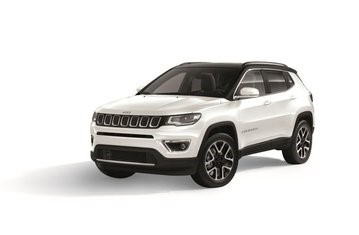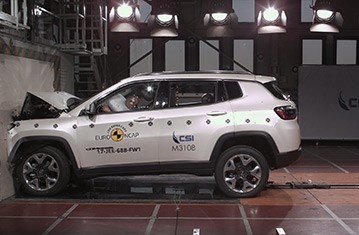- With standard equipment
- With safety pack
Find more information in the General Comments section of the assessment
Find more information in the Rating Validity tab of the assessment
- See More
- See More
- See More
- See More
- Good
- Adequate
- Marginal
- Weak
- Poor
 Passenger
Passenger
 Driver
Driver
 Rear Passenger
Rear Passenger
 Driver
Driver
 Car
Car
 Pole
Pole
 Rear Seat
Rear Seat
 Front Seat
Front Seat
- Good
- Adequate
- Marginal
- Weak
- Poor


Passenger
outboard
center
Fitted to the vehicle as standard
Not fitted to the test vehicle but available as option
Not Available
-
i-Size CRS
-
ISOFIX CRS
-
Universal Belted CRS
Easy
Difficult
Safety critical
Not allowed
| Seat Position | ||||
|---|---|---|---|---|
| Front | 2nd row | |||
| Passenger | Left | center | Right | |
| Maxi Cosi 2way Pearl & 2wayFix (rearward) (iSize) | ||||
| Maxi Cosi 2way Pearl & 2wayFix (forward) (iSize) | ||||
| BeSafe iZi Kid X2 i-Size (iSize) | ||||
| Maxi Cosi Cabriofix & FamilyFix (ISOFIX) | ||||
| BeSafe iZi Kid X4 ISOfix (ISOFIX) | ||||
| Britax Römer Duo Plus (ISOFIX) | ||||
| Britax Römer KidFix XP (ISOFIX) | ||||
| Maxi Cosi Cabriofix (Belt) | ||||
| Maxi Cosi Cabriofix & EasyBase2 (Belt) | ||||
| Britax Römer King II LS (Belt) | ||||
| Britax Römer KidFix XP (Belt) | ||||
Easy
Difficult
Safety critical
Not allowed
In the frontal offset test, protection of both child dummies was rated as good or adequate with the exception of the chest of the 6 year dummy, for which dummy readings of deceleration indicated a weak level of protection. In the side barrier test, protection of both dummies was rated as good. The front passenger airbag can be disabled to allow a rearward-facing child restraint to be used in that seating position. Clear information is provided to the driver regarding the status of the airbag and the system was rewarded. All of the restraint types for which the Compass is designed could be properly installed and accommodated.
- Good
- Adequate
- Marginal
- Weak
- Poor

Head Impact 15.3 Pts
Pelvis Impact 6.0 Pts
Leg Impact 6.0 Pts
The bonnet provided predominantly good or adequate protection to the head of a struck pedestrian. The bumper provided good protection to pedestrians' legs and the pelvis was well protected by front end of the car. The autonomous emergency braking system does not have pedestrian-detecting functionality.
- Good
- Adequate
- Marginal
- Weak
- Poor
| System Name | Active Speed Limiter |
| Speed Limit Information Function | N/A |
| Warning Function | Manually set |
| Speed Limitation Function | Manually set (accurate to 5km/h) |
| Applies To | Front seats | ||
| Warning | Driver Seat | Front Passenger(s) | Rear Passenger(s) |
| Visual | |||
| Audible | |||
|
|||
| System Name | LaneSense Lane Departure |
| Type | Lane Keep Assist |
| Operational From | 60 km/h |
| Warning | Visual |
| Performance | |
|
LKA Confirmation Test
|
Pass (5/5) |
| System Name | Forward Collision Warning Plus | |||
| Type | Forward Collision Warning with Auto-Brake | |||
| Operational From | 10 km/h | |||
| Additional Information | Default On; Supplementary Warning | |||
| Performance | | ||||
| Autobrake Function Only | Driver reacts to warning | |||
| Operational Speed | 10-200 km/h | 30-200 km/h | ||
| Approaching a stationary car | See AEB City | Crash avoided up to 40km/h.Crash speed reduced up to 80km/h. | ||
| Approaching a slower moving car | Crash avoided up to 70km/h. | Crash avoided up to 80km/h. | ||
| Following a car at short distance | ||||
| Car in front brakes gently | Mitigation | Avoidance | ||
| Car in front brakes harshly | Mitigation | Mitigation | ||
| Following a car at long distance | ||||
| Car in front brakes gently | Mitigation | Avoidance | ||
| Car in front brakes harshly | Mitigation | Avoidance | ||
The Compass has a seatbelt reminder for the front seats only. The autonomous emergency braking system performed well in tests at highway speeds, with collisions largely avoided or mitigated. A driver-set speed limitation device is standard, as is a lane departure warning system.
- Specifications
- Safety Equipment
- Videos
- Rating Validity
Specifications
Tested Model Jeep Compass 4 x 4 Limited, 2.0, LHD
Body Type - 5 door SUV
Year Of Publication 2017
Kerb Weight 1575kg
VIN From Which Rating Applies - all Compass variants
Class Small SUV
Safety Equipment
Note: Other equipment may be available on the vehicle but was not considered in the test year.
Fitted to the vehicle as standard
Fitted to the vehicle as part of the safety pack
Not fitted to the test vehicle but available as option or as part of the safety pack
Not available
Not applicable
Videos
Rating Validity
Variants of Model Range
| Body Type | Engine & Transmission | Model Name/Code | Drivetrain | Rating Applies | |
|---|---|---|---|---|---|
| LHD | RHD | ||||
| 5 door SUV | 1.4 MultiAir 140cv | 1.4 MultiAir 140hp FWD 'Sport', 'Longitude' and 'Limited' | 4 x 2 |
 |
 |
| 5 door SUV | 1.6 MultiJet 120cv | 1.6 MultiJet 120hp FWD 'Sport', 'Longitude' and 'Limited' | 4 x 2 |
 |
 |
| 5 door SUV | 1.4 MultiAir 170cv | 1.4 MultiAir 170hp 4WD AUTO Limited | 4 x 4 |
 |
 |
| 5 door SUV | 2.0 MultiJet 140cv | 2.0 MultiJet 140hp 4WD 'Longitude' and 'Limited'*, including AUTO versions | 4 x 4 |
 |
 |
| 5 door SUV | 2.0 MultiJet 170cv | 2.0 MultiJet 170hp 4WD AUTO 'Trailhawk' and 'Limited' | 4 x 4 |
 |
 |
* Tested variant



Find more information in the General Comments section of the assessment
 Share
Share











The passenger compartment remained stable in the frontal offset test. Dummy readings indicated good protection of the knees and femurs of both the driver and passenger. Jeep showed that a similar level of protection would be provided to occupants of different sizes and to those sat in different positions. Protection of the front passenger was good for all critical body areas. In the full-width rigid-barrier test, protection of the driver was good. Chest protection for the rear passenger was rated as marginal, based on dummy readings of chest compression, but that of other parts of the body was good or adequate. In the side barrier test, protection of all critical body areas was good and full points were scored. However, in the more severe side pole impact, protection of the chest was rated as poor, based on high rib compressions, although these remained lower than the values at which the risk of fatal injuries becomes unacceptably high. Tests on the front seats and head restraints demonstrated good protection against whiplash injury in the event of a rear-end collision. A geometric assessment of the rear seats also indicated good whiplash protection for occupants sat there. The Compass has a standard-fit autonomous emergency braking system. Tests of its performance at the low speeds at which whiplash injuries are often caused showed good performance with collisions avoided or mitigated at all test speeds.